Interview: Guido Harari discusses photographing Kate Bush
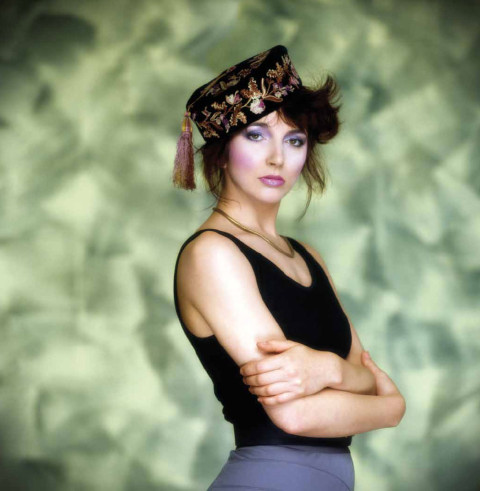
Italian photographer Guido Harari first photographed Kate Bush just after 1982’s The Dreaming was released and went on to take the official promotional shots for both Hounds of Love (1985) and The Sensual World (1989). He was then trusted enough to be invited by Kate to take (largely unseen) ‘reportage’ shots on the set of her 1993 film The Line, The Cross and The Curve. On the eve of the publication of a deluxe book of these photos – called The Kate Inside – and a south London exhibition, SDE spoke to Guido about the experience of photographing Kate Bush over a decade…
SuperDeluxeEdition: You started working with Kate at a time when she was taking full control of the sound of her music and her image. Did you have any concerns that she’d try to control you too much?
Guido Harari: No, it was unusually easy. I met here in 1982 when she was promoting The Dreaming and I’d just finished working on a book of photos of [English dancer/choreographer] Lindsay Kemp, who was her mentor. So I introduced myself with a draft of the book. Actually, she had one of Lindsey’s dancers with her, so it all happened very easily, she was very excited about the book and she agreed to do a brief photo shoot for an Italian magazine which we improvised in the hotel, with my portable studio. She and the dancers were still wearing their stage clothes and they performed for the camera very easily, which was very unusual. She loved the pictures and I sent her the book when it was finally finished and then three years later she called me to shoot the official photos for the Hounds Of Love album. She never censored me or directed me. She trusted me and expected ideas from me.
SDE: But did she do that thing that some artists do where they look at a contact sheet and they’ll put crosses through images, to say ‘do no use these’
GH: [laughs] Sometimes they even cut your transparencies in front of you, which is really like being mutilated. Actually, I was never with her when she saw the contacts or photos, but I always received a note of appreciation and gratitude for the work we had done. I don’t think she used many images – although they were widely published – but I don’t think she used as many as I’d expected because our photo shoots are very, very long. They often took about 12 or 15 hours, so there was plenty of material. But I can assume like with every artist, they just pick whatever they think is appropriate to whatever project they have at the time. But, you know, 20 or 30 years later, pictures have a completely different meaning. They resonate in a very different way.
SDE: So how many photos would you take, approximately, in say a 12-hour session?
GH: Most people nowadays think in digital terms, and that’s endless, but in those days we were shooting film, and I’d have a big bag full of films and probably we’d shoot 100 rolls, or 200 rolls. It depends, because medium format only had 12 frames, so you tend to shoot lots and lots. And of course when you shoot ‘analogue’ you don’t see the results so you tend to shoot a lot more, in order to be sure you’ve captured what you’re looking for. Also, you should consider that back then – like now – artists would do photoshoots with different magazines. They’d have one or two official photoshoots and then would accept photoshoots with magazines. Kate didn’t do that. She’d have one big, huge photoshoot to pick from and that was it and then she’d disappear.
SDE: So even though 12-hours might seem like a long session, that would be her total commitment to photographs for that album…
GH: Yes. It was almost like a performance, although she had already done that kind of photography with Gered Mankowitz, and he had set really high standards and it was really hard to come up with new ideas, because those standards were very high. It was almost trance-like, we would keep going and going and as soon as we believed we had results on one set-up, she’d disappear into her dressing room, change, or change make-up and clothes and come back and we might have a different light set-up and a different background and we would just try to capture some atmosphere. But you have to consider that when she called me to do the shoot, she basically didn’t want to work on concepts, she really wanted to be captured in the most natural way, which was challenging on the one hand and a bit disappointing on the other, because I wanted to compete with what she had achieved with [other] photographers and in her videos – some fresh ideas, some different concepts, but that was not the case.
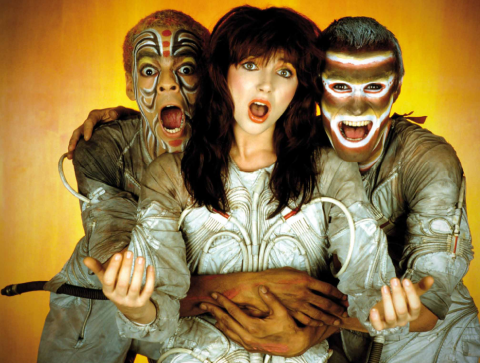
SDE: You say in the book that you were already a fan of Kate’s music when you first started working with her. Does that make a difference when taking photographs of a musician/singer?
GH: It’s not essential. What’s essential is to have a huge curiosity for the subject that you are about to shoot. I consider the shoot like a springboard, to get in deeper and find out aspects of the subject’s personality that you may not be aware of, and hopefully – and this is the utopia – that maybe the subject may not be aware. With many artists you might get a chance to listen to the new stuff, before you take the pictures, but this was not the case with Kate. I don’t think she was protective, but she was probably still working on the final aspects of the album’s production, when we took the pictures. She had cassettes and I would get to listen to maybe one or two tracks, while she was being made up, but that was it. Although when I shot for Hounds of Love, I had no idea what the new album was about.
SDE: That’s quite interesting, isn’t it, because prior to the release of that album, Kate was back in relative obscurity at the time. So you wouldn’t have known how widely published your pictures would be and what a big deal the album would be…
GH: Yes. I don’t know if she would have known that either [laughs].
SDE: Did Kate actually enjoy the process of a photo shoot, or was it seen as as something she *had* to do, so she may as well work with the people she wanted to work with.
GH: I think, yes. She enjoyed it because it was absolutely part of her artistic expression. Her visuals have always been very important. If you saw the concerts two years ago you will have seen how these things have grown. But I also know that she loves to work with people she likes. She told me one thing before that shoot in ’85… I said we should get a make-up artist or a stylist. She mentioned somebody and said “this guy is supposed to be a genius and really good”, and I said “well let’s get him!” but then she paused for a minute and said “but I’ve also been told he’s an arsehole”. She went on to say that she’d rather have less ‘genius’ if it means she can work with people she likes. I think her social life at the time seemed to revolve largely around musicians who worked with her – her collaborators – so I can say that even during those shoots and on the set of the film, the atmosphere was always very relaxed. Very quiet, no arguments, no tension.
SDE: Were you working for Kate or the record company?
GH: By that time she had her own label that was distributed by EMI. She had a special deal that allowed her full control and independence, and that may explain why, for instance during the shoots, there was nobody. She would come on her own, with her makeup artist and that was it. I was very surprised. She would usually just give me a call, to ask me if I was available. We’d meet in London to talk about it and that was it. I’d get to the studio at eight o’clock in the morning and that was it, non-stop ’till midnight or 1am! I would then send the pictures to the record company and I assume she would check them and make her selection. It was very, very easy.
SDE: How different was that process you’ve described to how you would work with other artists?
GH: It would depend if they commissioned my work [directly] or if it was a shoot for a magazine. The timing is different and the tension is different. There’s a lot of professionality involved. A lot of business. Sometimes the artists are concerned about the concepts, if there are concepts, but with Kate it was really like shooting a friend. Just for fun.
SDE: You say in the book that in 1985 the challenge was to capture “the REAL Kate Bush” – did you do that, and who would you say that person is?
GH: The real Kate Bush is probably a bit too ambitious to say [laughs]. But I think we tried to capture something authentic, which was not just her posing like a diva. I mean, it’s quite funny in a way, because the shoot for Hounds of Love is pure ‘80s, if you look at the clothes. Some really don’t make sense. There are some shots were she looks like Joan Collins, you know [laughs]. I don’t think some of those images work, but they certainly worked at the time. When we shot for The Sensual World in 1989 it was more fashion-y, because the clothes were all from one fashion designer, but I don’t think she was concerned about being fashionable, she just loved those clothes: the materials, the textures and how she looked in them. But in terms of the real Kate Bush, in the book the photos are presented in sequence, as they were shot, so people can get an idea of how things developed during a shoot, or not. I also picked some outtakes, where one minute she’s this incredibly iconic woman, with an incredible face and expression, and a split second later she cracks up, or you know, pulls a funny face. So that’s the real Kate Bush, in a way.
SDE: It’s interesting you refer to how ‘eighties’ the Hounds of Love session is. Kate’s quite heavily made-up in those photos. How would you work with Kate’s makeup artist at that time, Tina Earnshaw? Would you give certain direction, in terms of how the makeup should be. “Let’s try this…” etc. How did that interaction work?
GH: With that Hounds of Love session I would just try to see what Kate is looking for, asked questions, but didn’t give direction. In those days, for some funny reason during the shoots, you would build up with the makeup and the hair, so you would start very, very natural and then you would build up to this almost kabuki like mask of make-up and crazy clothes and hair. So that seemed to be the rule. But there was a point where I saw here with the makeup, but not yet wearing the right clothes and the hair not ready and I loved that ‘in-between’ – you can see the girl but also the star, in a way. So I took some shots like that, and she loved them. So I didn’t give direction and the next time with The Sensual World, everything was flowing very easily, so I just picked the clothes and thought about how I could photograph in the best possible way.
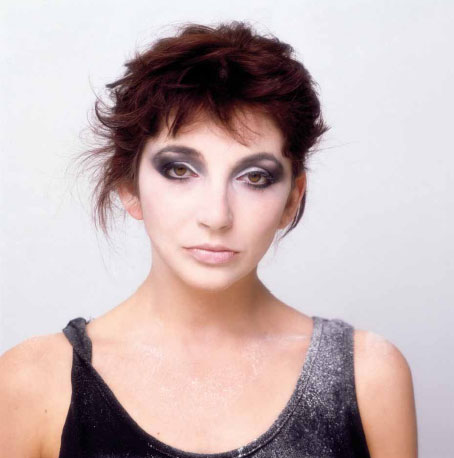
SDE: There is a lot of writing in the book, which I enjoyed. You haven’t just let the photos speak for themselves. Why did you decide to put so much text in there?
GH: I’ve done many books over the years, not just ones featuring my photos, and when I did book presentations in book stores or conferences and people are always interested in the stories, first hand, about what happened. Especially younger people. I’m not that big-headed that I think my pictures speak for themselves. I don’t consider myself an artist with a capital ‘a’, but I was there, and I witnessed some privileged moments with this great artist. And I thought it was a good opportunity to share the stories, so people have an idea of what happened.
SDE: Doing the reportage shots on the set of The Line, The Cross and The Curve, must have been a lot less stressful than having 12 hours in a room, to come up with something. You must have enjoyed that aspect of it?
GH: Yes. I enjoyed the studio shoots as well, but there was a pressure because you had to please not just the artist but also the record company, because the pictures would help sell the product. But with reportage there were no expectations. These were not pictures that she wanted to use for promotion. She just wanted me to do what she had originally seen in the Lindsay Kemp book – on the road, fly-on-the-wall, reportage. It was great. I could have access in any given circumstance. She would never stop me. There’s a shot in the book where she’s asleep with no makeup and curlers. Not many artists would allow you to show that, but she did.
SDE: You got a rare opportunity to see Kate at work. Okay, she wasn’t recording an album, but when making that film she must have been under a considerable amount of pressure. How did she cope with that?
GH: I knew she was very tense. I think the shooting only took two weeks but she had to complete and edit it for the London Film Festival. But at the same time, as I’ve said I never felt tension on the set. Things had to move on quite fast, there was no time to indulge in ‘take 236’!
SDE: I’ve read a quote where she’s since described the film as “a load of bollocks”. What did you think when watching proceedings?
GH: I think it was kind of random in a way. It felt like some videos interspersed with acting. It was interesting in a way, but I can tell she probably needed more time and less pressure.
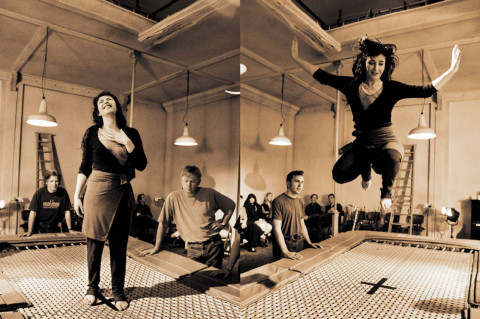
SDE: Over the ten year period, did you notice any change in Kate. She was a very young woman when you first worked with her. Her outlook, her professionalism, her friendliness – was that fairly consistent over that period of time?
GH: Absolutely. If you read her last note to me that I put in the book, after the reportage on the set of the film, she’s absolutely the nicest person on earth! What I may have noticed during the film, there was an increasing amount of pressure, which I only later found out, was due also to personal reasons. I never knew that her mother had died and some other friends had died. I only found out later, much later actually. She was very private about that.
SDE: Kate obviously took a very long break. Were you disappointed not to get the call when she eventually resurfaced in 2005 with Aerial?
GH: [pause] Erm, not really. People change, life moves on. You don’t have to take it personally, especially with artists. They are seekers – they focus on what’s going to be next, either on their music or visuals. I think our collaboration was really extensive. Ten years is a long time, although we’re [only] talking about four shoots, you know. But for her recent concerts, the brochure, she used Tim Walker, and he’s a fantastic photographer and a perfect choice for her, in terms of telling stories and new concepts. So no, I wasn’t disappointed… but I would have loved to go on, although there can be a danger because if it’s been ten years since you’ve last worked together, you’re both two different people so you don’t know what the chemistry will be. I think it’s a mistake to assume the original chemistry will still be there.
SDE: Did you go to the Before The Dawn shows in Hammersmith?
GH: Yeah, I got to go to one of the concerts. I think it was incredible that she created such a show in one year. It’s really brave. On the one hand I thought it was dated. But I’m saying this in a positive way. You can see all her influences in there, but they were developed to the max – the films, the actors, the dancers, the musicians used. Everything was state of the art.
SDE: When you went, did you try to knock on her dressing room door to say ‘hello’?
GH: [laughs] Well, I tried. Of course the people around her had changed by then, she had a new manager, but I tried to make contact, but no reply, whatsoever…
SDE: When did you last speak to Kate?
GH: That was 1998. By then she was a mother and she called me one day and asked me something quite personal, which was did I want to come to London and take pictures of her and Bertie, her son. I said “yes, sure” but at the same time I had major changes in my life, big tensions and that shoot never happened. That was our last phone call.
SDE: Did you consider approaching Kate to cooperate with the book?
GH: I would have loved to. But you know, when I saw two years ago that there was no way to make contact, either through management, or mutual friends – I tried to get in touch with her brother – there was no way. So I thought that maybe when she reads in the papers that I’m putting this book together, she may try to contact me. It would have been fantastic to do it with her. But also, these pictures are from way back. She may not be interested in going back to the past. She’s probably more interested in her future, whatever that may be. I can only imagine that she knows about the book and she’s probably quite happy for me to do it, but she won’t be involved. I don’t think she was involved in any of the other books.
SDE: Yes, she hasn’t even done anything for her brother’s photo books, so you probably don’t need to take it personally.
GH: Exactly. I respect her privacy and of course I will try to find a way to send her a copy of the book, and that’s it.
SDE: Out of interest, when you take photos and do these 12-hour shoots, the copyright and ownership of the photos remains with yourself, is that correct?
GH: Well, I don’t know about the law in England, but usually – and I think this applies everywhere – it’s a joint copyright. There’s the copyright the photographer holds, since he’s the author of the images, but at the same time there’s a copyright that the artist holds, because it’s their image. But I think usually as long as you don’t exploit the images, like in advertising, I think that’s fine.
SDE: The reason I asked the question is because if you are putting an outtake in a book, I was wondering whether you need to seek Kate’s permission to do that or whether it’s understood that you don’t need to?
GH: I spoke to Gered Mankowitz about this, because he’s been in the same position. He’s done two or three major shoots for Kate, and he’s put out outtakes as well. I think as long as the outtakes are respectful and they don’t put the artist under a bad light and they are just illustrating the creative process, you know? As I said before I selected pictures that give you a feel for how things developed during those 12 or 15 hours. There are some funny shots as well, but they are not absolutely damaging to the artists’ reputation. These shoots were taken 25, 30 years ago for specific purposes. The artists picked images for those purposes, but it doesn’t mean the rest of the images are terrible. I have a sequence of Kate in a red Kimono, and I think we probably shot 200 pictures. How many would you pick from that session? You’d probably pick two or three, but that doesn’t mean that the others are not interesting.
SDE: Finally, John Carder Bush created most of the sleeves to Kate’s singles and albums, but how pleased were you to end up with the cover to Rubberband Girl?
GH: I read that John started taking professional pictures for album covers because there was no budget for a professional shoot – which I don’t believe – but he took some great images, and in fact I felt in awe in a way, when she called me in ’85 because she was putting out these great conceptual photos. But Rubberband Girl and Moments of Pleasure, I think she picked the best shots from the reportage. And the picture on the cover of Rubberband Girl was taken during the filming of the video of Rubberband Girl. Whereas the pictures on Moments of Pleasure is actually taken when she was performing The Red Shoes. Some of the pictures were also used in the box set, This Woman’s Work.
SDE: I guess that’s the ultimate, having a photo on a single or album cover?
GH: Yes, especially an album cover. But I was very pleased with having two single covers and some more in the booklet. That means we shared the experience.
Thanks to Guido Harari who was talking to Paul Sinclair for SuperDeluxeEdition.com
Guido’s book The Kate Inside is released this month and can be ordered from The Wall of Sound Gallery. There will also be an exhibition in South London of Guido’s photos that runs from 13-30 September. Check out the Project Space website.

 Interview
Interview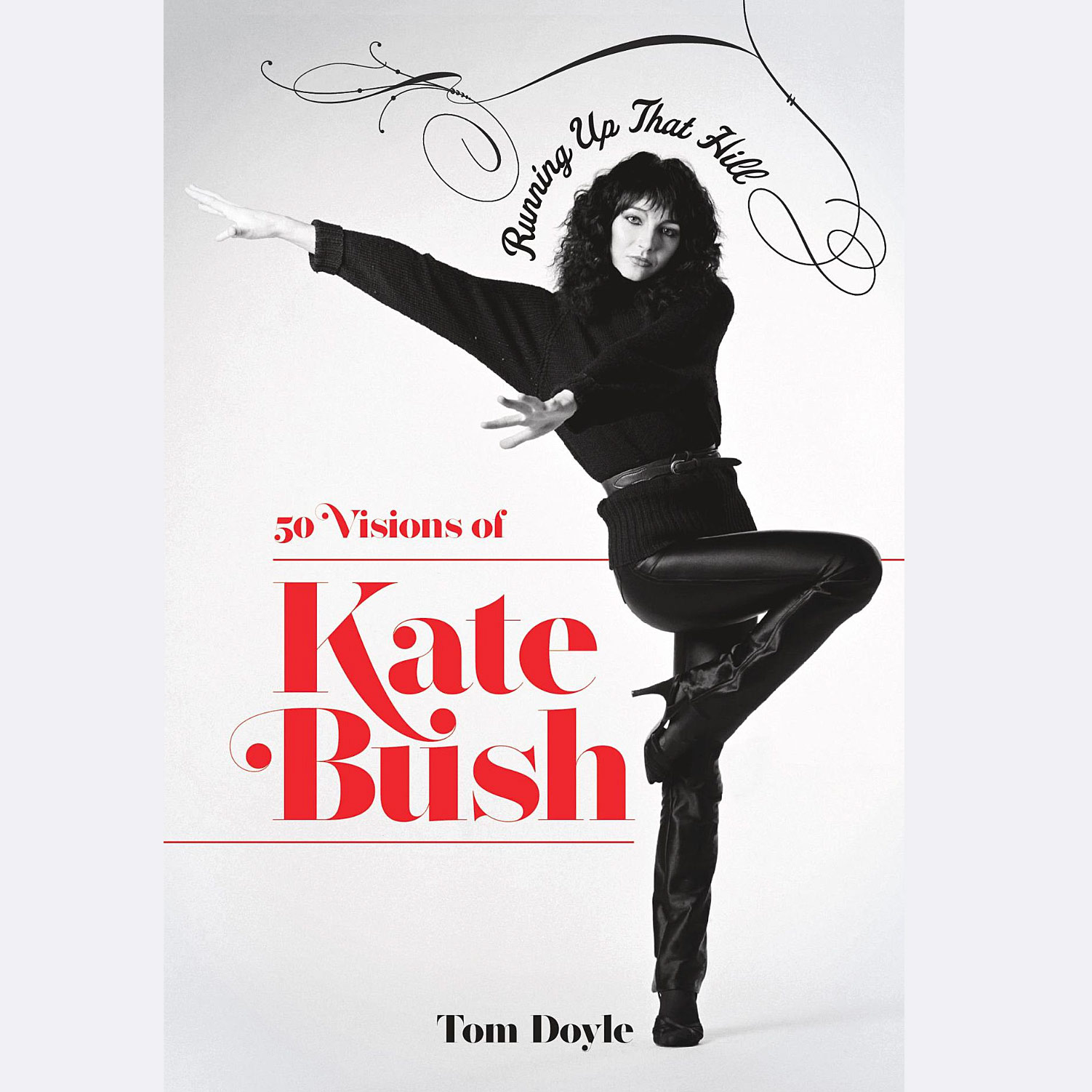
 Reviews
Reviews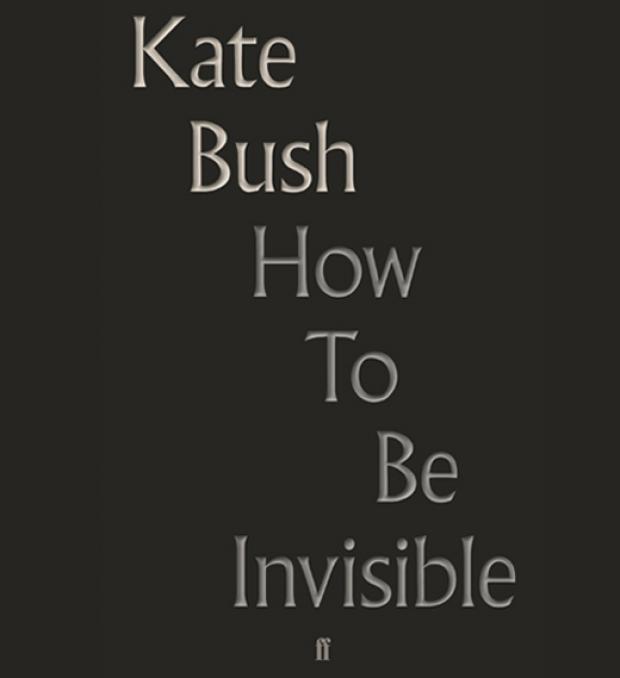
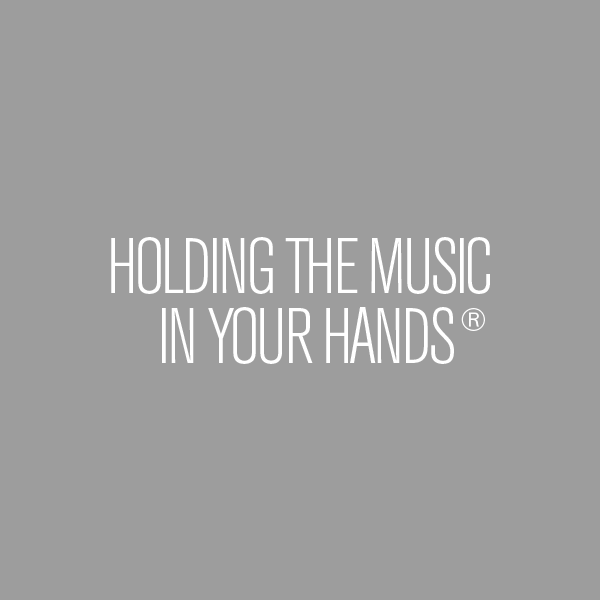
By Paul Sinclair
33